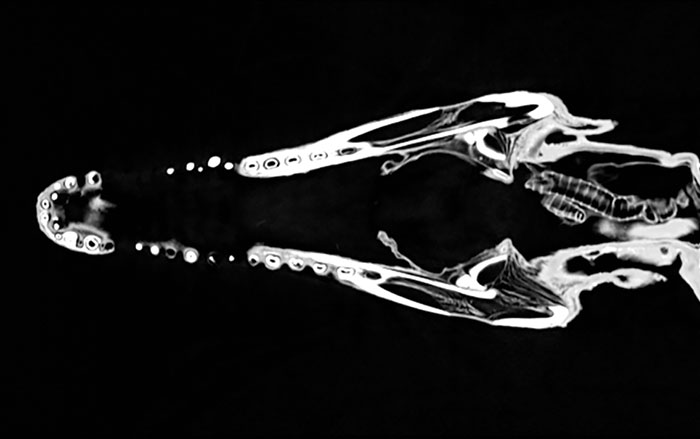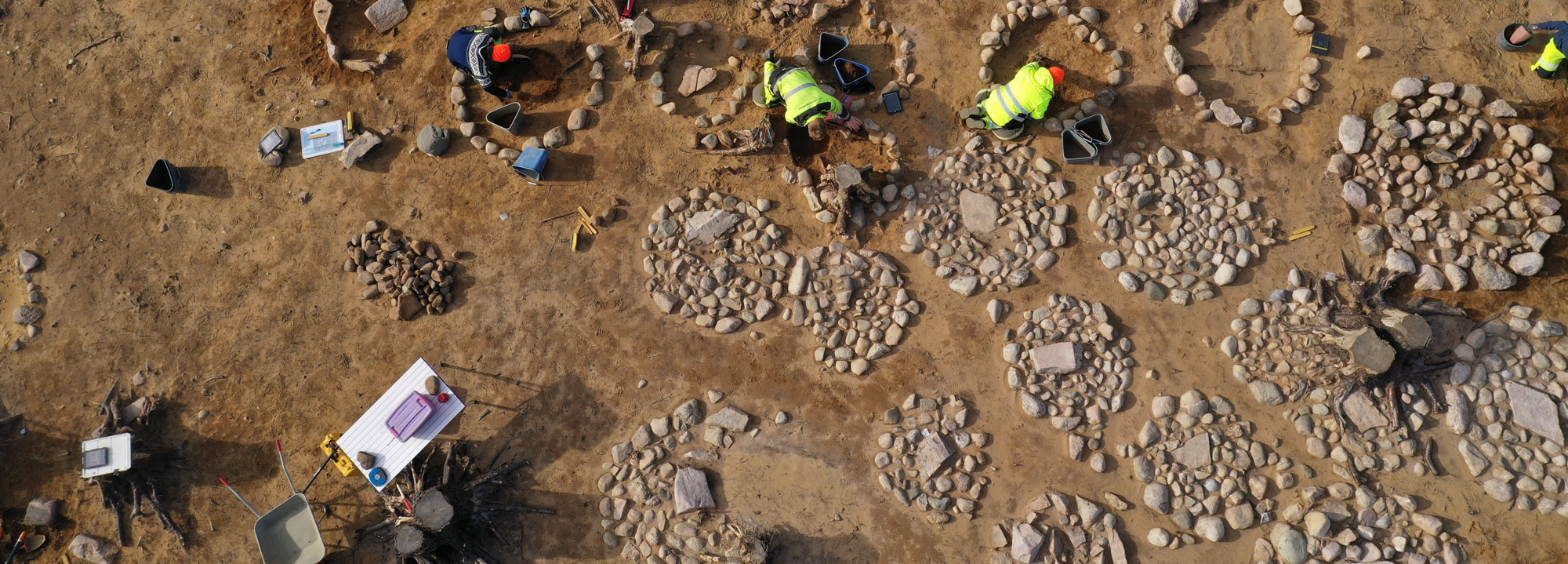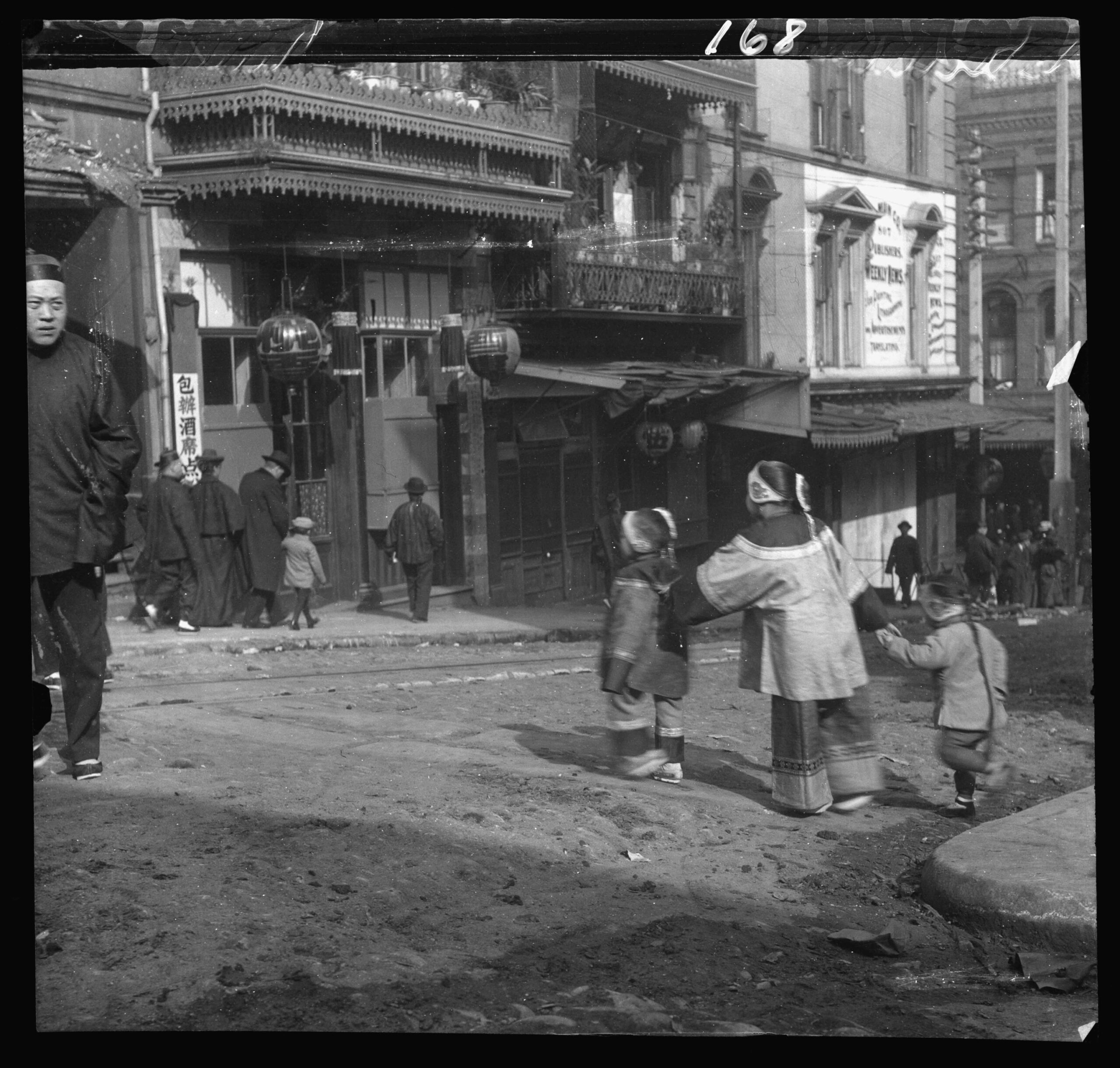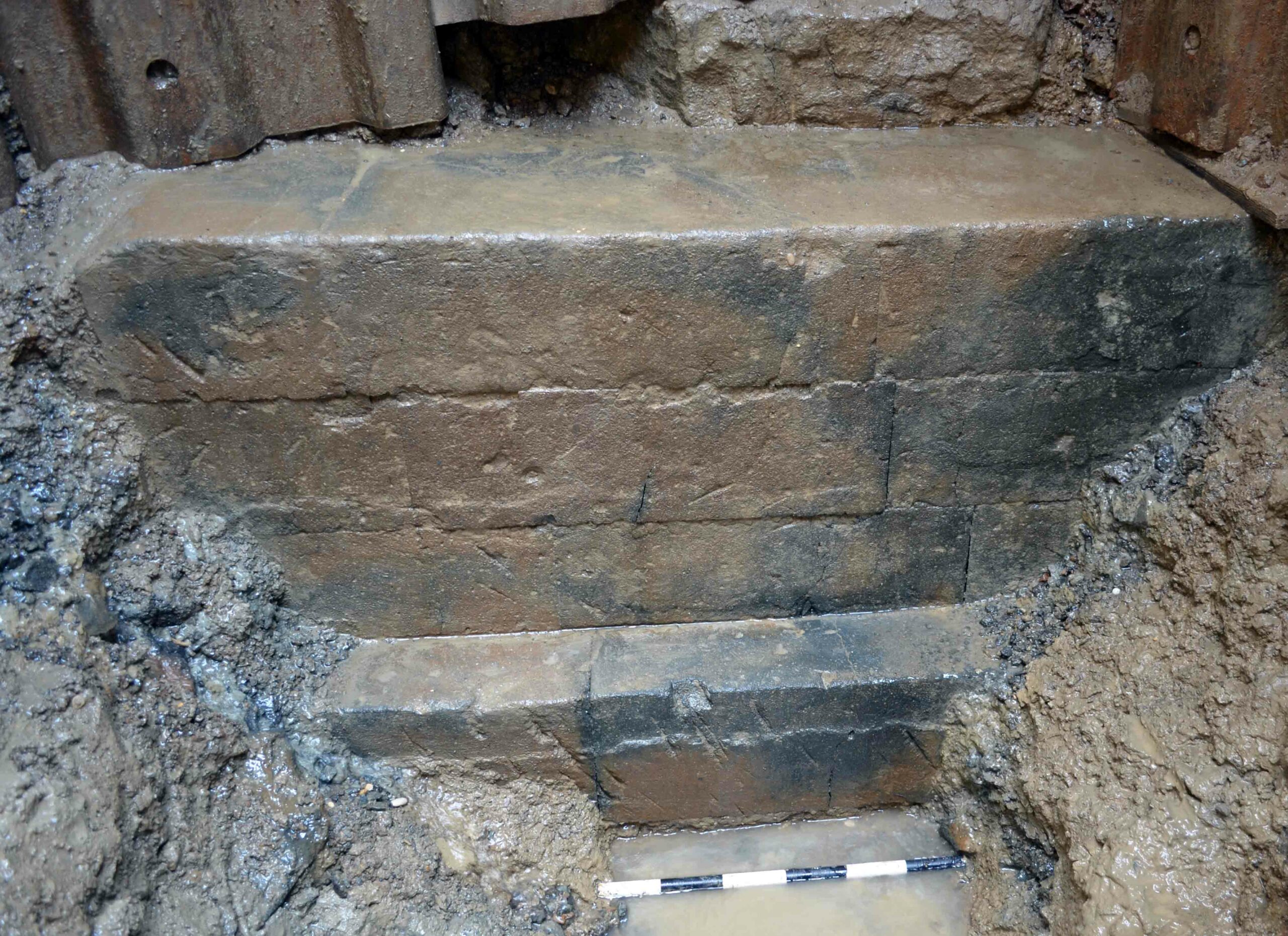
HOLME BEACH, ENGLAND—A second Bronze Age timber circle preserved in salty silt on a beach in eastern England has been dated with dendrochronology to the same summer as its neighbor, Seahenge, whose 55 posts surrounded the upended stump of an oak tree. Known as Holme II, the second ring consisted of two oak logs laid flat, surrounded by an oval of oak posts with smaller branches woven between them, then an outer ark of split oak timbers, and then a fence of closely set split oak timbers, according to The Guardian. The two circles were built from trees cut down in the spring or summer of 2049 B.C. Coastal erosion exposed the circles, which had been built in boggy freshwater 4,000 years ago. “As the timbers used in both timber circles were felled at the same time, the construction of the two monuments must have been directly linked. Seahenge is thought to have been a free-standing timber circle, possibly to mark the death of an individual, acting as a cenotaph symbolizing death rather than a location for burial. If part of a burial mound, the second circle would have been the actual burial place,” said David Robertson, historic environment officer at Norfolk County Council.










